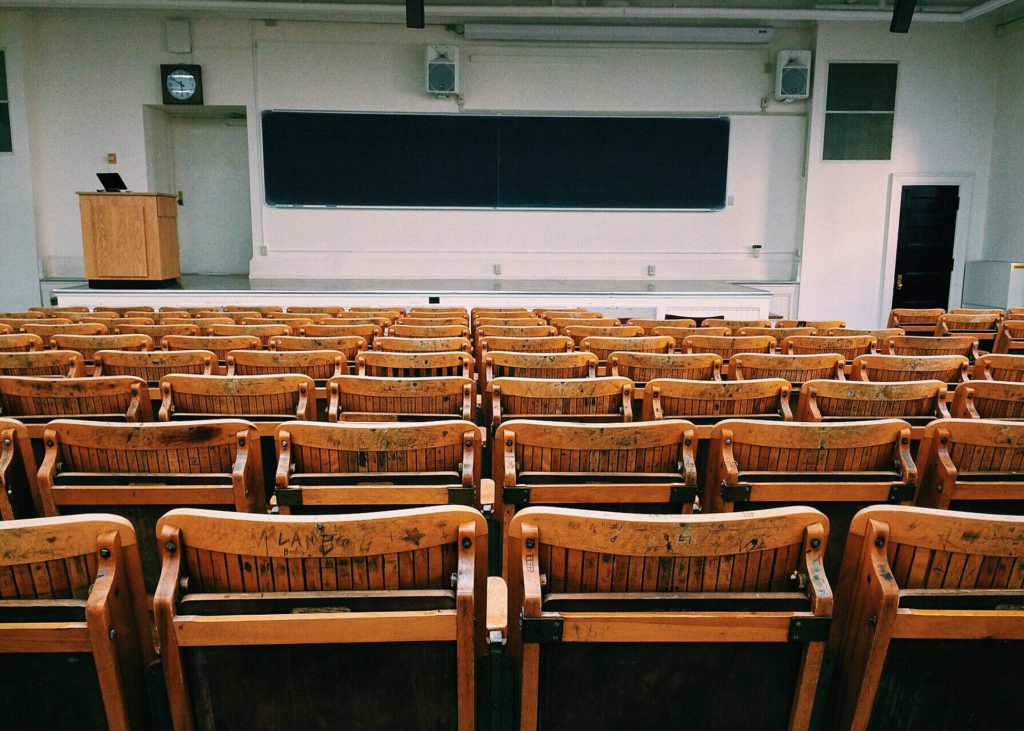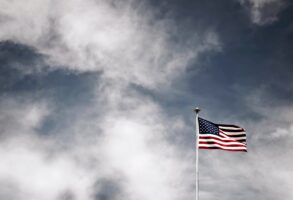
Published September 12, 2022
A new and sweeping effort to infuse leftist radicalism into America’s K–12 curriculum has begun. The College Board — the group that runs the SAT test and the Advanced Placement (AP) program — is pilot-testing an AP African American Studies course. While the College Board has withheld the course’s curriculum framework from the public, I have obtained a copy.
Although K–12 teachers and academic consultants working with the College Board have publicly denied that AP African American Studies (APAAS) either pushes an ideological agenda or teaches critical race theory, those denials are false. APAAS clearly proselytizes for a socialist transformation of the United States, although its socialism is heavily inflected by attention to race and ethnicity. Even if there were no laws barring such content, states and local school districts would have every right to block APAAS as antithetical to their educational goals. In any case, APAAS’s course content does run afoul of the new state laws barring CRT. To approve APAAS would be to gut those laws.
The stakes in the emerging battle over APAAS are higher than they may at first appear. The College Board is correct to say that APAAS faithfully represents the content of African American studies courses at the college level. That is precisely the problem. University “studies” programs (African American studies, Latino studies, Asian American studies, Native American Studies, women’s studies, gender studies, environmental studies, etc.) tend to function more as ideological training camps than as academic programs. Once AP African American Studies moves into use, a full array of AP “studies” courses will undoubtedly follow. Those courses will siphon off students from American history and other more conventional subject areas, bringing campus-style balkanization and politicization to K–12.
The College Board’s monopoly over Advanced Placement testing gives it the ability to act as an unelected national school board, effectively nullifying state and local control over course content by imposing what amounts to a national curriculum. Creating a series of AP ethnic- and gender-studies courses would be a clever way of introducing leftist identity politics to the very states currently resisting such curricula. Something like this has already happened with the College Board’s AP U.S. History, AP European History, and AP World History courses. AP African American Studies, however, takes leftist indoctrination to a whole new level.
The College Board hasn’t made it easy to figure out what APAAS teaches. Not only have they kept the pilot-curriculum framework secret, but the framework itself is opaque. There are four topics in the final week of the course, for example, one of which is “Black Study and Black Struggle in the 21st Century.” That topic covers “reflections on the evolution of Black studies and the field’s salience in the present through a text by scholars, such as Robin D. G. Kelley.” Not until you actually read Kelley’s essay, “Black Study, Black Struggle,” do you discover a thoroughly political critique — from the left — of black student activists and their allies.
Kelley warns that simply establishing safe spaces and renaming campus buildings does nothing to overthrow capitalism. Authentic black studies, argues Kelley, can be perfected only through revolutionary study and activism outside of the academy. In Kelley’s view, norms of objectivity that dominate the mainstream academy must be rejected in favor of Marx’s call for “a ruthless criticism of everything existing” — followed by fearless struggle against the powers thus exposed.
This pattern repeats for almost every topic in the final quarter of APAAS, which covers “movements and debates” from about the 1950s up to the present. The topic descriptions sound neutral, but the readings almost uniformly consist of neo-Marxist agitation — pleas for a socialist transformation of America, inspired by African Americans and infused with their cultural style. APAAS’s “debates,” such as they are, explore precisely what sort of leftist radical you should be.
To Kelley, for example, the writings of Ta-Nehisi Coates are too preoccupied with the personal trauma of racism to serve as inspirations for revolutionary action. And that tiny distance between Coates’s quietist repudiation of America’s core story and Kelley’s activist Marxism describes the location of APAAS on the political spectrum.
I’ve begun with Robin D. G. Kelley because he turns out to be a key to the agenda that structures virtually the entire modern section of the course. Kelley grew up reading Marx, Engels, Lenin, and other landmarks of traditional Marxism in political study groups. Eventually, Kelley joined the Communist Workers Party (CWP), one of several Maoist splinter groups that emerged in the 1970s. Kelley was drawn to CWP because of its predominantly black membership. His discovery of a black Marxist intellectual tradition, however, led him to the mentorship of Cedric Robinson, author of Black Marxism: The Making of the Black Radical Tradition. Robinson modifies Marx by highlighting issues of culture and race. In particular, Robinson points to a “Black radical tradition” whose focus on spirituality and the social collective not only models an alternative to capitalism but inspires a deeper repudiation and replacement of Western civilization itself.
Kelley’s first book was a study of black communists in Alabama during the Depression. What turned him into a celebrity on the left, however, was his 2002 book Freedom Dreams: The Black Radical Imagination (just republished in a 20th-anniversary edition with a new introduction). Freedom Dreams applies Robinson’s ideas to an extended study of the “Black radical tradition.” The book is an effort to rehabilitate the early black American communists, ’60s-era Maoist splinter groups, and radical black writers commonly ignored by standard political histories. Kelley does just enough to distance himself from the worst abuses of communism to make the effort seem plausible — and the Left loves him for it. Kelley has a knack for making radicals who took inspiration from communist revolutions in Russia, China, and Cuba seem like so many warm and fuzzy friends in Mister Rogers’ Neighborhood. In effect, the readings in the final quarter of APAAS proselytize for the “Black radical tradition,” in the manner of Kelley and his mentor, Cedric Robinson.
Five individuals sit on APAAS’s curriculum “content writing team,” one of whom is a high-school teacher and four of whom are scholars. Of the four scholars, Joshua M. Myers of Howard University is the one whose expertise matches the subject matter of the last quarter of the course. Myers is an acolyte of Cedric Robinson and a close intellectual ally of Robin D. G. Kelley. Myers’s last book was a 2021 biography of Robinson, for help with which he chiefly thanks Kelley in his acknowledgments. Myers’s writings are filled with laudatory references to both Robinson and Kelley.
In a 2018 article, Myers invokes Kelley to argue that Robinson’s idea of the “Black radical tradition” should be synonymous with black studies itself. (“Black studies,” “African American Studies,” “Africana Studies,” etc. are used synonymously, and with different capitalization strategies.) Myers bemoans the false objectivity of historians whose writings “rarely target capitalism for condemnation and destruction.” Black studies, says Myers, should properly be thought of as an “antidiscipline,” rather than a conventional academic field, precisely because it resists the classically liberal assumptions of an academy more committed to scholarly detachment than to human liberation. Writers like Robinson and Kelley, says Myers, are rightly less interested in making a “historiographical contribution” than in producing a “political intervention.” In short, Myers, whose course-content writing responsibilities would have focused on the final quarter of APAAS, is deeply committed to a political mission for black studies. In Myers’s eyes, the purpose of black studies is the advancement of human liberation through the dismantling of capitalism and the reconstruction of society along lines suggested by the black radical tradition (as interpreted by Robinson and Kelley). The last of APAAS’s four curriculum sections is certainly consistent with that view.
Consider the first unit in the final section of the course, chiefly focused on anticolonial movements. The first topic in that unit explores the writings of Martinican psychiatrist Frantz Fanon, particularly Fanon’s influence on black political movements in America. Fanon’s paean to the healing power of anticolonial violence was a major influence on the revolutionary plans of the radical groups and Maoist political parties chronicled in Kelley’s book Freedom Dreams. Before Kelley, Cedric Robinson analyzed Fanon by emphasizing his interest in revolutionary violence, and then touting this aspect of Fanon as a model for American blacks. By contrast, prominent black-studies scholar Henry Louis Gates Jr. tried to fudge the violent side of Fanon’s work.
The APAAS framework goes with Kelley and Robinson rather than Gates. By cleverly keeping the topic focused on the reception of Fanon by American black leftists, the content-writing team effectively forces the more radical reading of Fanon to prevail. Henry Louis Gates Jr., by the way, has been trotted out by the College Board to praise APAAS. Yet when it comes to control over the curriculum, Gates’s hyper-radical political foes are the ones actually running the show.
Fanon was deeply hostile to America, calling the United States “a monster, in which the taints, the sickness, and the inhumanity of Europe have grown to appalling dimensions.” That tallies well with Robinson’s interpretation, which stresses Fanon’s hostility to Western civilization. Robinson particularly likes the following passage from Fanon: “When the colonized hear a speech on Western culture, they draw their machetes or at least check to see they are close to hand.” There might be a case for including material like this if some critic of Fanon was also “close to hand.” Yet like most of the topics in the final quarter of APAAS, high-school students are offered the passionate and powerful writings of an ultraradical figure, with no balancing viewpoints provided.
A stunningly large portion of the APAAS curriculum is devoted to the history of black studies. This seems oddly self-referential, until you realize it’s a strategy for teaching about radicalism without quite seeming to do so. The story of black studies told in one of the assigned texts (and mimicked by the structure of the course itself) goes like this:
In the mid-1960s, movements for black power and black cultural nationalism emerged from dissatisfaction with the liberal integrationist aims of the civil-rights movement. Two young men in Oakland, Calif., Bobby Seale and Huey Newton, were influenced by the leftist groups that flourished during this period. Radicalized by revolutionary writers like Fanon, whom they read on their own, Seale and Newton founded the militant Black Panther Party and mobilized local college students to support the creation of politically radical black-studies programs. Some of those programs remained nationalist and revolutionary. Yet most eventually softened their politics in keeping with the scholarly conventions of the (merely) liberal academy.
The book that tells this story, Fabio Rojas’s From Black Power to Black Studies, draws heavily on Kelley’s early work, material Kelley later incorporated into Freedom Dreams. And this history of black studies plays directly into Kelley’s own piece for APAAS, which, as we’ve seen, urges student radicals to forget about safe spaces and venture outside the academy to recreate the revolutionary conditions of the 1960s and ’70s.
What, if anything, does all this have to do with critical race theory? Is CRT included in APAAS, and if so, does the course run afoul of laws that bar the promotion of CRT-based concepts in K–12? Yes indeed, APAAS is positively filled with CRT. We can define CRT narrowly, as the body of thought descended from legal scholar Derrick Bell and taken up by colleagues like Kimberlé Crenshaw and Patricia Hill Collins, or broadly, as almost any theory that looks at classically liberal accounts of race through a skeptical eye, especially as influenced by Marx. (Crenshaw herself, a founder of CRT, uses both a broad and a narrow definition.) According to the broader definition, most of the readings in the final section of APAAS are CRT.
Consider the APAAS topic titled “‘Postracial’ Racism and Colorblindness.” The topic itself, which labels attempts to treat individuals without regard to race as racist, flies in the face of recent laws barring K–12 courses from attacking colorblindness as wrong or even racist. One of the authors assigned on that topic is Eduardo Bonilla-Silva, a critical race theorist in the narrow sense. (Bonilla-Silva, who openly embraces CRT, describes himself as a Marxist who nonetheless believes that race cannot be reduced to class.) Bonilla-Silva is best known for his theory of “colorblind racism.” Florida’s Stop WOKE Act explicitly bars K–12 promotion of the idea that colorblindness is racist. It’s tough to imagine a more explicit violation of the new CRT laws than that.
Most of the readings in the latter section of APAAS reject colorblindness in some fashion or other. The course even assigns writings by Kimberlé Crenshaw and Patricia Hill Collins, by any definition pillars of critical race theory. True, these readings focus on Crenshaw’s and Collins’s writings on intersectionality. Yet both Collins and Crenshaw view intersectionality through the prism of CRT.
It’s often claimed that CRT is an advanced academic theory too complex to be taught in K–12. Yet by assigning work by Bonilla-Silva, Crenshaw, and Collins, APAAS is teaching the hard stuff — full-blown CRT. And again, such readings are almost never balanced by the views of classical liberals, be they on the political left or on the right.
It’s impossible to convey the full extent of APAAS’s radicalism in a short space. Perhaps I’ll describe other APAAS assignments down the road. One good strong taste of this sorry stew should be enough, however. The long and short of it is that APAAS promotes leftist radicalism. The sheer one-sidedness of the readings establishes that. The course’s political bias is so egregious that the presence or absence of CRT laws is almost beside the point. No state or school district is obligated to tolerate indoctrination on this scale, whether a CRT law is on the books or not. APAAS is wrong for our schools. Governors, legislators, and state and local education officials must act accordingly.
Can APAAS be fixed? My view is that “studies” courses on race, gender, ethnicity and such do not belong in K–12. Some years ago, under heavy public criticism, the College Board issued an entirely bogus revision of its left-leaning AP U.S. History course. Yet little was actually changed. The thrust of the course remained, and no revisions were made to textbooks or course syllabi. It was a Potemkin revision, for public-relations purposes only. More such fancy footwork is on the way, I fear. Better to block APAAS altogether, thereby damming the flood of other AP “studies” courses bound to follow should APAAS be approved.
That said, if states and local school districts do allow a revised version of APAAS to be taught, no student should be permitted to enroll who has not already taken U.S. History. APAAS offers a distorted lens on America, as do all identity-politics-based courses. At minimum, APAAS should follow, not proceed or substitute for, a proper U.S. history course.
Any supposed fix for APAAS would have to make major changes, above all by including representatives of alternative perspectives. Given teacher bias, including contemporary political controversies in K–12 courses is a bad idea, in my view. But if you’re going to try to “fix” APAAS, you’ve got to include the “black liberal tradition” as well as a “Black radical tradition.” Writers like John McWhorter and Randall Kennedy are liberal critics of the radical Left and of conservatives alike. McWhorter and Kennedy haven’t given up on America, unlike most of the modern writers assigned by APAAS. Why not include their work, and the work of liberals like them, including their explicit critiques of the Left?
There’s a black conservative tradition, too. Why not juxtapose Eduardo Bonilla-Silva on “colorblind racism” with Shelby Steele on the dangers of racial preferences? Why not allow students to compare Ta-Nehisi Coates or the latest neo-Marxist denunciation of America with Glenn Loury’s “Case for Black Patriotism,” or the activism of Robert Woodson, and the work of other black conservatives, too?
States and school districts should settle for nothing less by way of a revision. And the College Board must make it clear that the exam will feature questions on liberals and conservatives, not just radicals — and then must follow through. Would such a course represent a break from college-level African American studies? You bet it would. And that is precisely the point.
Stanley Kurtz is a Senior Fellow at the Ethics and Public Policy Center. Beyond his work with Education and American Ideals, Mr. Kurtz is a key contributor to American public debates on a wide range of issues from K-12 and higher education reform, to the challenges of democratization abroad, to urban-suburban policies, to the shaping of the American left’s agenda. Mr. Kurtz has written on these and other issues for various journals, particularly National Review Online (where he is a contributing editor).
Stanley Kurtz is a Senior Fellow at the Ethics and Public Policy Center. Beyond his work with Education and American Ideals, Mr. Kurtz is a key contributor to American public debates on a wide range of issues from K–12 and higher education reform, to the challenges of democratization abroad, to urban-suburban policies, to the shaping of the American left’s agenda. Mr. Kurtz has written on these and other issues for various journals, particularly National Review Online (where he is a contributing editor).









